Minimalist Neutral Interiors: Calm and Inviting Beauty
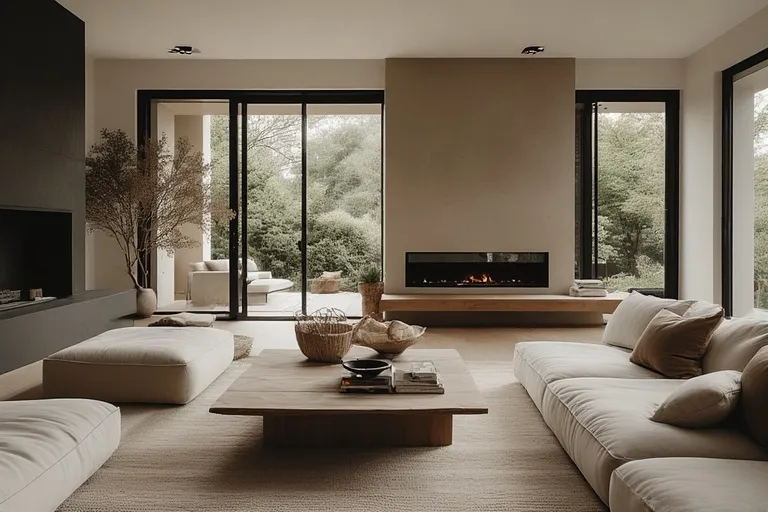
Minimalist neutral interiors have become the ultimate choice for modern homeowners seeking serenity, sophistication, and timeless appeal. This design philosophy embraces simplicity, natural hues, and thoughtful balance—creating spaces that feel open, calm, and effortlessly elegant. Instead of relying on bold colors or excessive décor, interiors highlight clarity, comfort, and refined restraint.
In this article, we’ll explore how this aesthetic transforms homes into peaceful sanctuaries, covering everything from color palettes and textures to furniture choices and lighting techniques. Whether you’re redecorating a cozy apartment or designing a spacious family home, neutral minimalism offers a perfect path to beauty through simplicity
Why Minimalism and Neutrals Work So Well Together
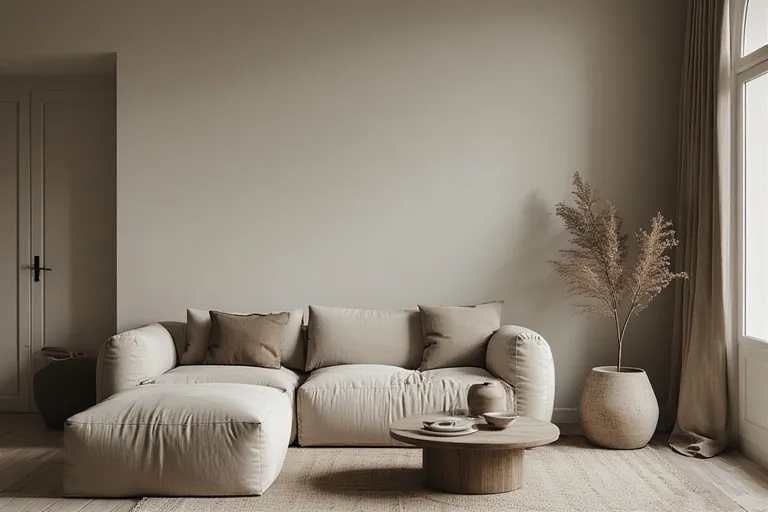
Minimalism and neutral design are natural partners. The essence of minimalism lies in intentional simplicity—removing clutter and focusing only on what truly adds value to your space. Neutral colors, on the other hand, enhance this simplicity by creating a calm, balanced background that feels effortlessly elegant.
When you merge the two, you get interiors that are timeless, adaptable, and soothing. This combination allows your home to feel open, bright, and connected—making it the perfect foundation for both relaxation and focus.
1. A Sense of Calm and Clarity
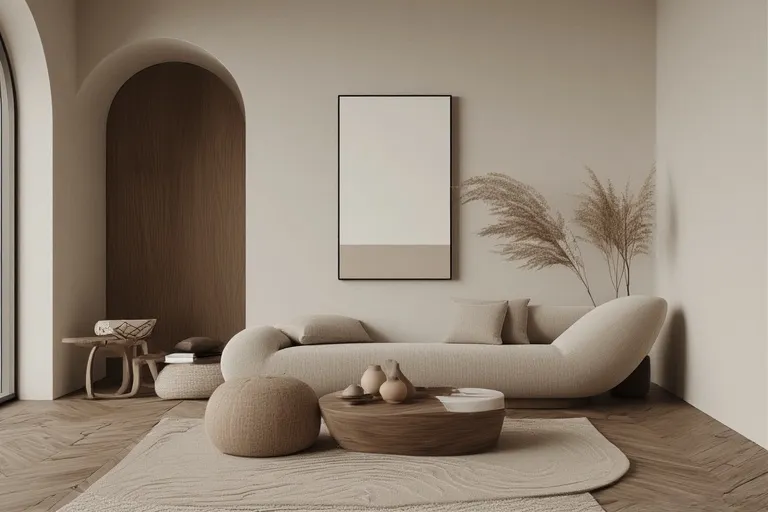
Neutral colors like beige, ivory, soft white, taupe, and greige are known to promote tranquility. When used in minimalist spaces, these tones reduce visual noise, helping your mind and eyes rest. A home designed in such a palette feels grounded and uncluttered—a perfect antidote to the chaos of everyday life.
2. Timeless Appeal
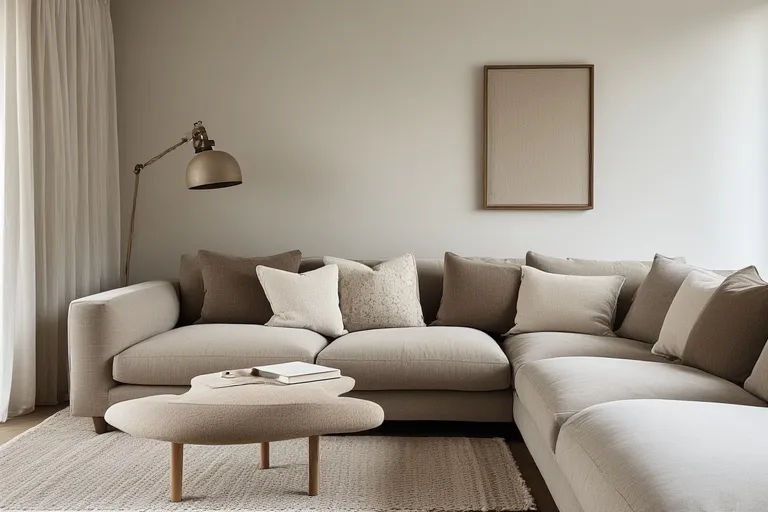
Unlike trendy color schemes that quickly fade, neutral tones never go out of style. They provide a versatile canvas that adapts to changing decor preferences and seasons. You can easily refresh a minimalist neutral room with new textures or accessories without overhauling the entire design.
3. Enhanced Light and Space
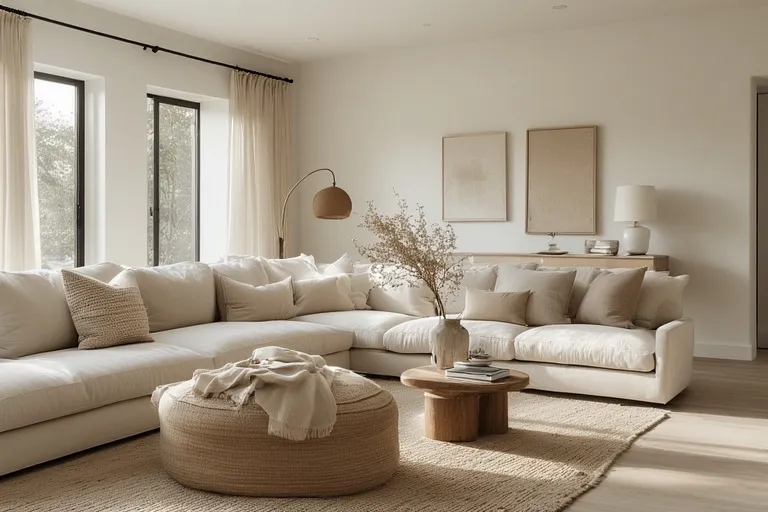
Neutral shades naturally reflect light, which helps even small rooms feel larger and airier. When paired with the clean lines and open layouts of minimalism, the result is a spacious, inviting environment that feels both modern and comfortable.
The Core Principles of Minimalist Neutral Interiors
At its heart, minimalist neutral design is about restraint and intention. Here’s what defines it:
1. Function Before Form
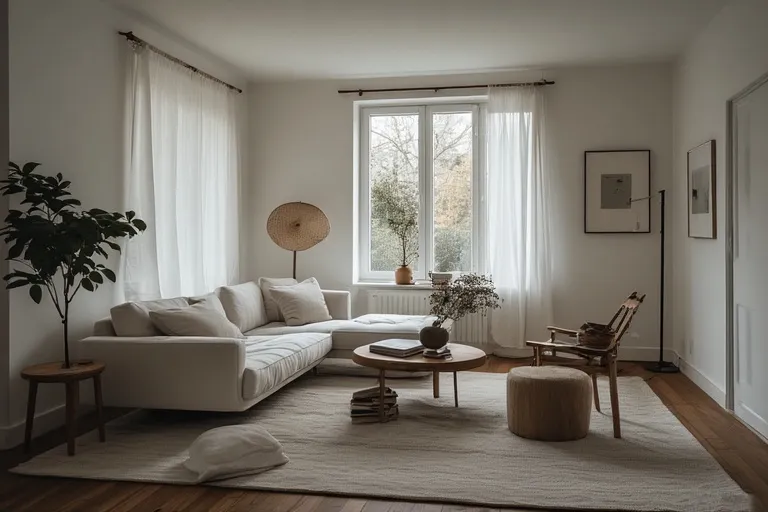
Every object in a minimalist home should serve a purpose. Furniture pieces are carefully chosen for their practicality and quality, not quantity. Instead of filling a room with decorative extras, each piece contributes to comfort, usability, and visual balance.
2. Thoughtful Color Palette
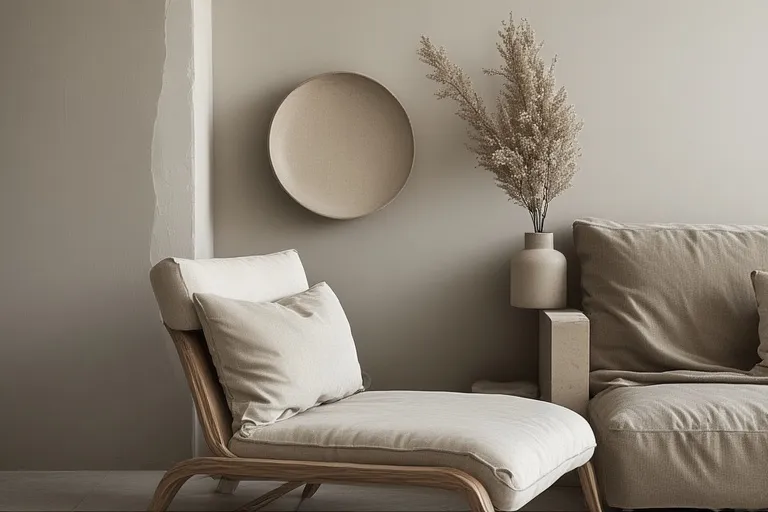
A neutral palette isn’t just about whites and beiges—it’s about subtle variation. Combine warm undertones like cream and oatmeal with cooler tones like gray or stone for depth. Layering these shades creates visual interest while maintaining harmony.
3. Clean Lines and Simple Shapes
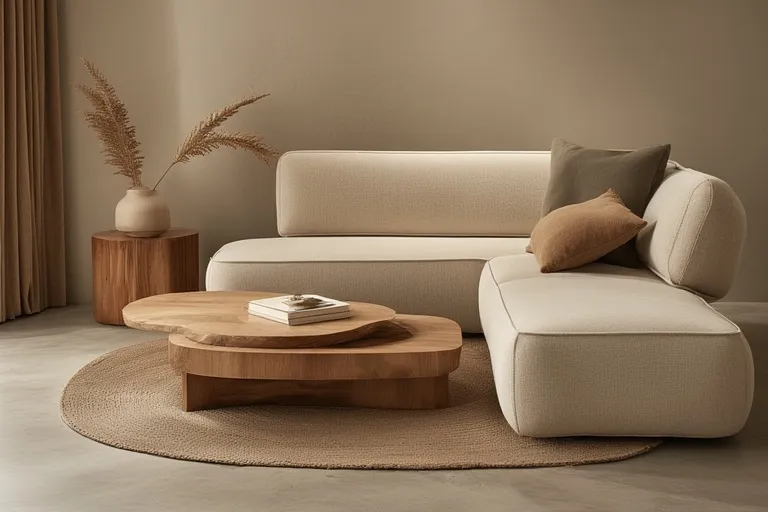
Minimalist furniture emphasizes clean geometry—straight edges, soft curves, and uncluttered forms. The simplicity of shape reinforces the feeling of openness and calm, ensuring nothing distracts from the space’s natural beauty.
4. Quality Over Quantity
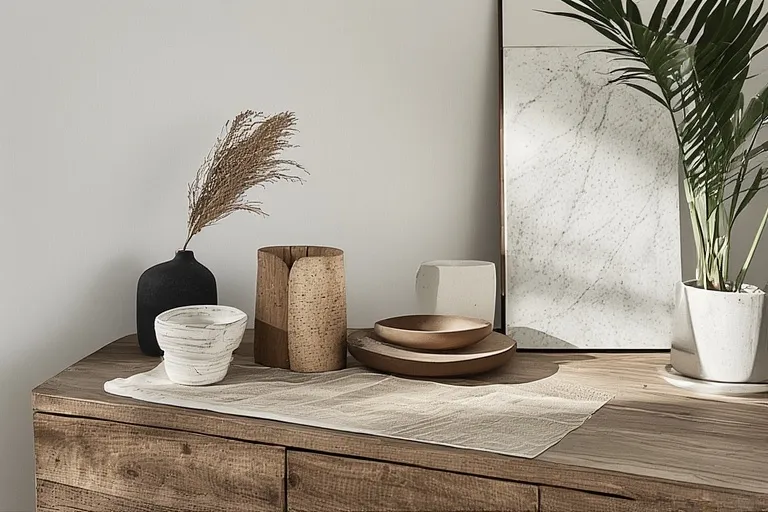
Since minimalist design reduces excess, each element must feel intentional and well-made. Choose solid wood, linen, ceramic, marble, or brushed metal—materials that bring quiet luxury and durability to your home.
5. Space to Breathe
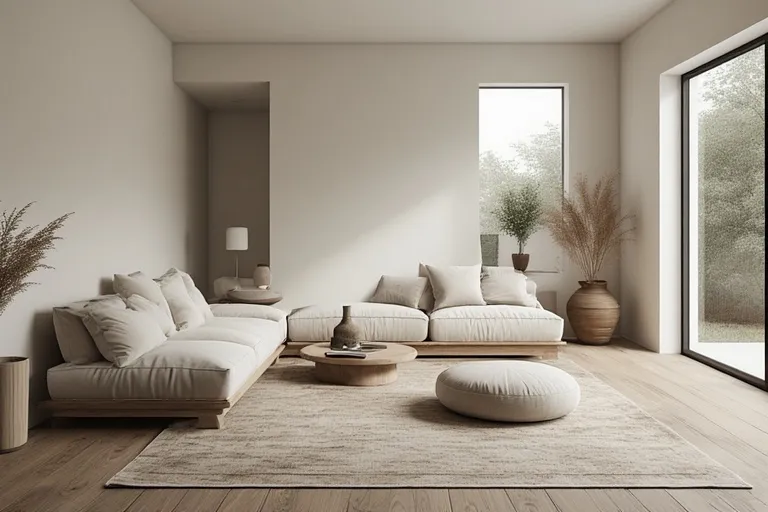
Negative space, or “white space,” is as important as the items themselves. Leaving areas open allows the eye to rest and gives each design element room to shine. This approach is key to the calm and balance that define minimalist interiors.
Designing Each Room with Minimalist Neutral Principles
Living Room
Start with a neutral foundation—soft beige walls, a linen sofa, and a light oak coffee table. Add texture through a wool rug or cotton throw. Keep decor simple: one large piece of wall art or a few ceramic vases in natural tones. Use warm lighting to enhance comfort and prevent the room from feeling too stark.
Bedroom
A minimalist neutral bedroom should feel restful and uncluttered. Choose a low-profile bed with crisp white bedding, layered with soft gray or taupe accents. Keep bedside tables minimal, and opt for concealed storage to maintain a serene atmosphere. Natural materials like rattan or linen add warmth and tactile comfort.
Kitchen
Neutral kitchens embody timeless elegance. Combine white or ivory cabinets with matte finishes, stone countertops, and stainless or brass fixtures. Open shelving with neatly arranged dishes and glassware adds a functional yet stylish touch. Keep countertops free of unnecessary items for a clean, streamlined look.
Bathroom
Soft neutrals create a spa-like feel. Use large-format tiles in shades of sand, stone, or ivory. Incorporate a freestanding tub or simple glass shower, complemented by wooden accents for organic contrast. Add fluffy towels and subtle scents to complete the tranquil experience.
Workspace
For focus and productivity, a minimalist workspace is ideal. Keep your desk clear except for essentials, and let natural light flow freely. Use neutral hues on walls and furniture to reduce distractions, while a few plants or textural decor pieces add life and balance.
Styling Tips for Minimalist Interiors
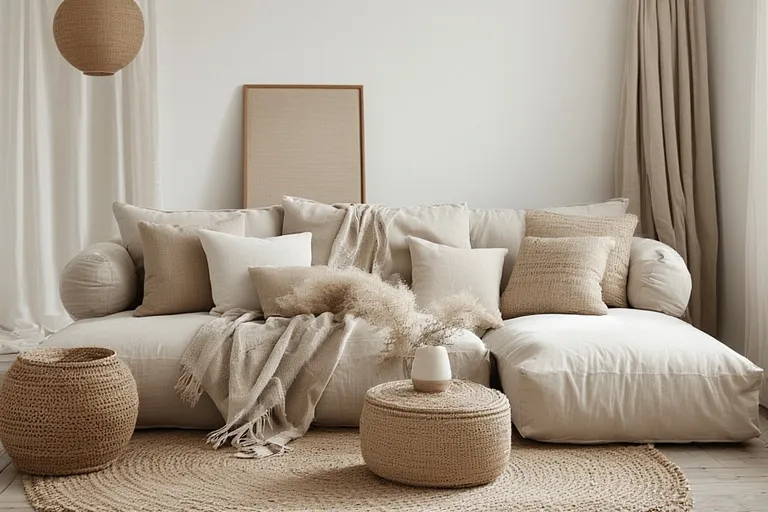
- Layer textures, not colors. Mix fabrics like linen, wool, cotton, and jute to create depth without breaking the neutral palette.
- Embrace natural light. Use sheer curtains or no window treatments to let sunlight enhance the soft tones.
- Add contrast through materials. Combine matte and glossy surfaces—like ceramic and metal—to avoid flatness.
- Use greenery wisely. A few well-placed plants add vibrancy while keeping the look fresh and organic.
- Invest in statement lighting. Minimalist interiors benefit from sculptural pendant lights or sleek floor lamps that double as art.
Decor Accents That Complement Minimalist Neutrals
Minimalism doesn’t mean sterile or boring. It’s about intentional warmth and purposeful simplicity. Add cozy accents like textured cushions, handcrafted pottery, or neutral artwork to make the space feel inviting. A hint of wood grain or woven material can introduce the perfect amount of contrast and character.
Common Mistakes to Avoid
- Over-decorating: Minimalism loses its effect when too many items compete for attention.
- Ignoring texture: A neutral palette can look flat without layers of texture.
- Choosing the wrong undertones: Mixing warm and cool neutrals can feel disjointed if not balanced carefully.
- Lack of personal touch: Even minimalist spaces should reflect your personality through meaningful decor or memories.
Conclusion
Minimalist neutral interiors bring together simplicity, comfort, and timeless elegance in one cohesive design philosophy. By focusing on quality over quantity, embracing a balanced palette, and creating space for calm and clarity, you can turn any home into a peaceful retreat that feels effortlessly stylish. This approach isn’t about having less—it’s about making room for what truly matters.
1. What are minimalist neutral interiors?
Minimalist neutral interiors combine simplicity and soft color palettes to create calm, timeless, and elegant living spaces.
2. Which colors work best for minimalist neutral design?
Soft whites, beige, ivory, taupe, and gray work best as they bring warmth and harmony without overwhelming the space.
3. How can I make a neutral space feel cozy?
Use textured fabrics, warm lighting, and natural materials like wood and linen to add depth and comfort.
4. Is minimalist neutral decor suitable for small homes?
Yes, it’s ideal—neutral tones and minimal furniture make small rooms look brighter, larger, and more open.
5. What materials suit minimalist neutral interiors?
Wood, linen, marble, stone, and ceramic add natural elegance and complement the neutral color scheme beautifully.

2 Comments